The Best Cure for KJVOism: A Real 1611 KJV
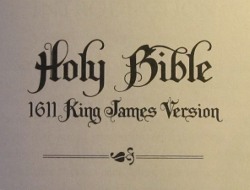
It has been widely publicized that the year 2011 is the 400th anniversary of the original publication of the “Authorized” or King James Version of the Bible in English. Historically, this translation has been the most widely used, at least since it overtook the previous champion, the Geneva Bible of 1560 (chiefly, at least initially, as a result of the legal suppression of the printing of the Geneva Bible by the British monarchy, in favor of the KJV).
Note, however, that the great majority of the editions and copies of the KJV printed and read in the past 400 years have been revisions rather than reprints of the original form of the KJV, with literally tens of thousands of revisions in spelling, punctuation and the use of italics, plus many hundreds of revisions in the precise wording of the text. Later editions also included the switch from “black letter” (“Gothic”) type to Roman, the widespread omission of the Apocrypha in the 18th and later centuries, along with the omission of an extended calendar and charts of biblical genealogies. Most unfortunately, later editions omit the extremely important and informative introductory essay, “The Translators to the Readers,” which was included in the original edition. In short, most KJV users, particularly those who claim to be “King James Version 1611 Only” in their beliefs, have never actually seen or used a real 1611 King James Version in the original form in which it was issued from the press in 1611.
Past facsimiles
In the past facsimile reprints of the 1611 KJV have been produced from time to time. In 1833, “The Holy Bible, an exact reprint page for page of the Authorized Version published in the year 1611” was printed at the University Press, Oxford. It featured Roman type.1 In 1911, the University Press at Oxford issued two 1611 reprints—the first a facsimile (in black letter) in reduced size of the original 1611 KJV, the other an exact reprint page-for-page but in Roman type, both with introductory essays by A. W. Pollard.2 I have owned a copy of the 1911 Roman type reprint for almost 35 years.
This 1911 Roman type reprint was reissued in the 1970s (or early 1980s) by Thomas Nelson of Nashville, about the time they issued their New King James Version (and for a time Nelson sold the two volumes together in a slipcase). This reprint omitted the Pollard essay (and perhaps other features—I gave my copy to one of my sons a few years ago and cannot check it directly). Later—probably in the 1990s—Hendrickson Publishing also reprinted the 1911 Roman type edition (in precisely the form Nelson had). These two recent reprints are easy to find via the Internet.
Besides these, over the years various publishers have produced several full-sized facsimile reprints of the 1611 KJV. My brother has a copy of one made in the 1950s, for which he paid $350, used, a decade ago. Such full-sized facsimiles are rarely seen and are generally rather pricey (in the hundreds or even many hundreds of dollars).
An affordable new facsimile
Now, another edition, widely available and quite inexpensive, has appeared. This one is made by Zondervan and sold at Wal-Mart (and perhaps other retail outlets). The ISBN is 978-0-310-44029-1. It is a facsimile—an exact reproduction in the original black letter script—of the 1611 edition, but in a reduced size, and with one feature of the original omitted—the thirteen books of the Apocrypha (as noted on p. viii of the Introduction to this new edition). That the 1611 KJV originally did have the Apocrypha can be visually confirmed in this edition on the page containing Malachi 4, where the “catch-word” at the bottom of the page is “APO-” which points to “APOCRYPHA” which is at the top of the next page in the original (and in my 1911 reprint), after which originally followed the complete text of those non-canonical books. [amazon 0310440297 thumbnail]
The printed retail price of this Zondervan 2011 facsimile reprint is $7.99, though I have bought several copies at Wal-Mart in Kansas for $4.97. I have heard it priced about a dollar higher elsewhere (and I suspect they hope to make a profit on the publication of the KJV at that price). I would strongly urge every preacher, every Christian reader and every church and Christian college library to get a copy at once. If you have any KJVO friends, buy and give them a copy. There is no quicker cure for KJVOism that the direct and extended study of the 1611 edition, introductory material and all.
One finds in the actual, original, genuine 1611 KJV (no doubt “preserved in the form God wants us to have”) an introductory essay that states the translators’ perspective on their own and other translations (they, at least, were decidedly not “KJV-only”). If I could do just one thing to combat KJVOism, I would have every KJVO believer carefully read those eleven, highly informative pages. The original translators’ English Bible text has literally thousands of variant marginal renderings (showing that they did not believe their translation as found in the text was infallibly correct), plus variant manuscript readings, showing that they did not believe that the manuscript reading given in their text was necessarily always right. One will also find numerous places where words are “omitted,” “added” or altered as compared with all modern editions of the KJV, to say nothing of a considerable number of printer’s errors (are these also part of the “perfect preservation” we hear so much about?). And one can discover on the title page of the NT those revealing words: “cum privilegio” (Latin: “with privilege”) which demonstrate the fact that this translation was copyrighted from the day it was first published (contrary to the misrepresentation on this point that is often part of KJVO teaching).
I am quite sure that the quickest “cure” for KJVOism is the close and careful study of the actual original KJV itself. I would challenge—even dare—everyone of KJVO persuasion to get this facsimile of the original KJV and study it cover to cover and margin to margin, spending a year and more in the process, and try to prove me wrong.
(Photos of a copy of the Zondervan 400th anniversary facsimie 1611. Click to enlarge.)
Douglas K. Kutilek Bio
Doug Kutilek is the editor of www.kjvonly.org, which opposes KJVOism. He has been researching and writing in the area of Bible texts and versions for more than 35 years. He has a BA in Bible from Baptist Bible College (Springfield, MO), an MA in Hebrew Bible from Hebrew Union College and a ThM in Bible exposition from Central Baptist Theological Seminary (Plymouth, MN). His writings have appeared in numerous publications.
- 332 views
[Aaron] How can we know there are mistakes. Already made that argument:Just thought of a flaw in this, so I’ll argue with myself a little. It can be fun. (When you argue with yourself, you’re guaranteed to win.)
1. People make mistkes [Just noticed an irony there… I misspelled ‘mistakes’]
2. The KJV translators were people
3. The KJV translators made mistakes
Premise 1 has a flaw. Even though people make mistakes (and premise 2 is rock solid, I think!), they do not make them continuously, and they occasionally do something without mistakes, per se… and even more often, do something without mistakes of a particular kind.
I once wrote a (very short) post with no typos in it.
Defense: the more complex the activity, the more likely mistakes become. In the case of translating the entire Bible from Hebrew, Greek and Aramaic—pretty complex. The likelihood of zero mistakes is really, really small.
(Which brings us back to the article: the translators themselves were confident enough that they had not made every judgment call flawlessly that they included gobs of “or this” notes in the margins.)
Views expressed are always my own and not my employer's, my church's, my family's, my neighbors', or my pets'. The house plants have authorized me to speak for them, however, and they always agree with me.
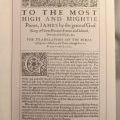
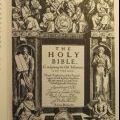
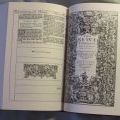

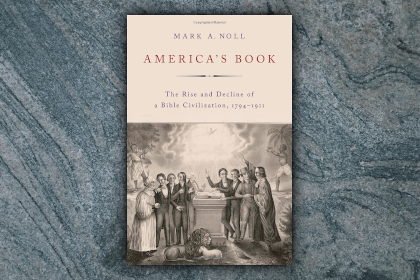
Discussion